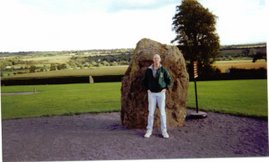Wednesday, March 08, 2006
Happy Birthday Jim Rice.
This early morning post honors Jim Rice, former Boston Red Sox slugger, who turns 53 today. Rice was one of the most feared hitters in the American League from 1975-1986. Beset by injuries during the final three years of his career, from 1987-1989, he came to an abrupt halt and retired after the 1989 season with numbers that should have, by now, put him into the Hall of Fame.
Here's a quick rundown: Rice was AL MVP in 1978 with league-leading marks in homers (46), RBI (139), hits (213), total bases (406, incidentally, the first time an AL player passed the 400 TB mark since a fellow named DiMaggio did it in 1937 for one of those obscure New York teams), slugging percentage (.600) and triples (15), while hitting .315, third best in the AL behind Rod Carew (.333) and Al Oliver (.324). In all, Rice led the AL in homers three times, in RBI twice, in total bases four times, times having reached base once, slugging percentage twice, triples once and hits once. He also had four seasons in which he had 200 or more hits, and eight seasons in which he had 100 or more RBI. Simply stated, the man put runs on the scoreboard.
Detractors will point to three things that justify his exclusion from Cooperstown. First, they'll claim he was a lousy defensive outfielder. It is true that Rice was a bit tentative defensively when he first reached the majors, but he worked hard at defense, and posted league average range factors for putouts, and above average assist totals for his career. He became an expert at playing balls high off of the Green Monster into singles with barehanded grabs and quick, accurate throws back to the infield. As a quick aside, from 1978-1980, when all three men were healthy, you could argue that the Red Sox outfield of Rice in LF, Fred Lynn in CF and Dwight Evans in RF was one of the best all-around units in the game.
The second thing naysayers will point out is that he hit into a ton of double plays. He led the AL in that dubious category four times (all in consecutive years), including a single-season record 36 in 1984 (a season in which he still had 122 RBI, second in the league to teammate Tony Armas and his 123 that year). What goes unstated is the fact that the Red Sox, almost always a station-to-station baserunning team, never put runners in motion on running counts. If any of the Rice's contemporaries had to hit under such one-dimensional offensive conditions, it is a good bet that their GIDP rates would be comparable to Rice's. In fact, Dave Winfield, playing for the Yankees in 1983 hit into 30 DPs to finish second behind Rice and Armas that year, both of whom hit into 31. Conversely, Greg Luzinski of the White Sox, a far slower runner than Armas, Rice or Winfield, hit into just 10 DPs that year. The difference can be found in the fact that the White Sox put their baserunners into motion far more often than the Red Sox and Yankees did, thereby generating more offense as a result (they won the AL West title that season).
A third thing that pops up in the effort to deny Rice his Hall of Fame ticket is the fact that he hit just .225 in 71 post-season at-bats. Yes, that is a crucial negative, but the man had over 8,000 major-league at-bats. Do we really want to penalize him for 71 at-bats in 1986 and 1988? Did the HOF voters kill Ted Williams chances for immortality because he hit just .200 in his only World Series appearance (1946)? Stan Musial hit just .256 in four World Series appearances with the Cardinals. Willie Mays hit just .239 in his World Series appearances. Going way back in time, Ty Cobb hit .262 in his three World Series appearances, over 100 points below his lifetime average of .366. Does the fact that these men had batting slumps over a few dozen high-profile games diminish their collective greatness? Let's examine the converse: Brian Doyle hit .438 for the Yankees in the 1978 World Series as a replacement for the injured Willie Randolph. Does anyone think that he belongs in the Hall purely based on that performance?
Rice is also hurt, in the eyes of some, for slipping below the magic .300 mark for his career (he finished with a .298 batting average), and for failing to reach the 400 homer plateau (he finished with 382). Mickey Mantle also failed to hit .300 lifetime (he also ended his career at .298). Al Kaline hit .297 lifetime, plus he retired one homer shy of 400. Are their Hall of Fame credentials null and void because of these things?
Rice was also famous for being unfriendly to the media as a player. Back in the late 1970s, that meant you didn't say much, if anything to reporters. I suppose if he'd put on a dress, or had multiple body piercings and tattoos a la Dennis Rodman, then that would have made him media darling. Whatever. That has nothing to do with what Jim Rice accomplished on the field. Was he a perfect player? No he wasn't, but then again, who is? He was a high-average hitter with power who took over for Carl Yastrzemski in left field, and continued the tradition of Hall of Fame caliber play at that position that Ted Williams established in 1940 (Williams played right field in his rookie year of 1939). It is long past the time for Rice's accomplishments to be acknowledged with his enshrinement into the Baseball Hall of Fame.
Jim Rice's Career Stats
Subscribe to:
Post Comments (Atom)

No comments:
Post a Comment